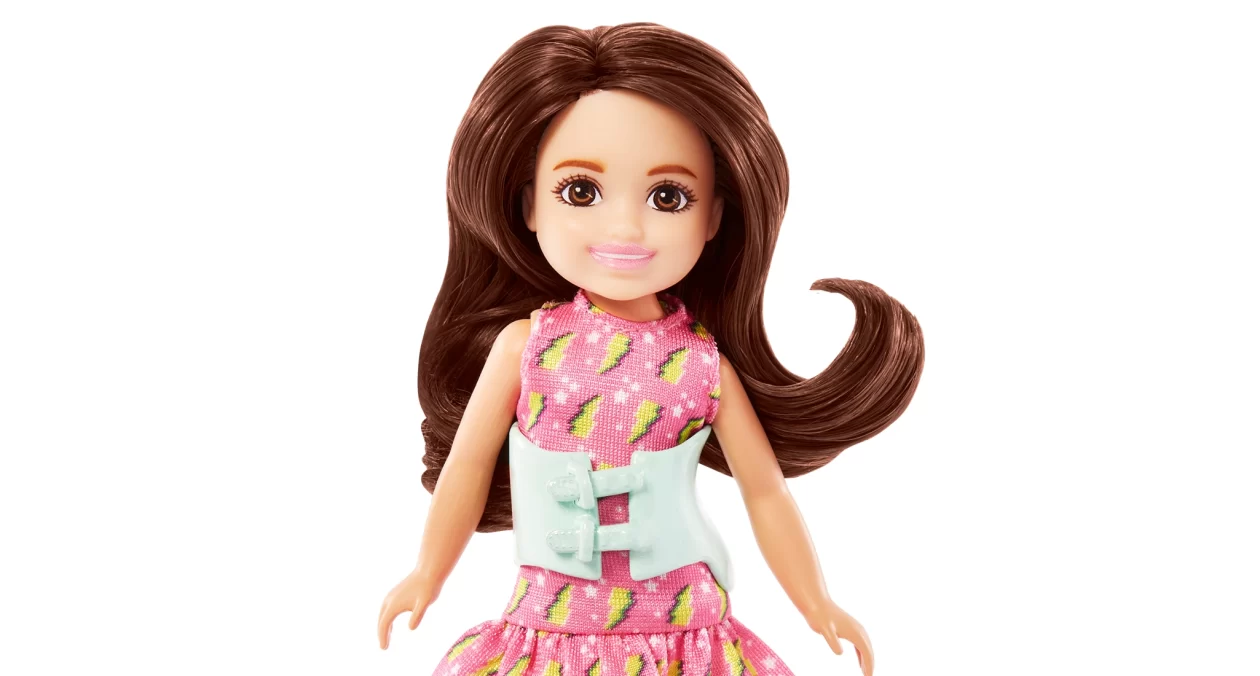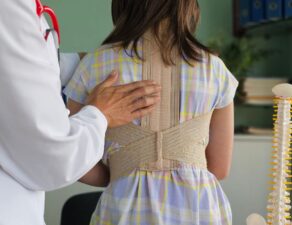
Barbie has introduced a new doll with Scoliosis as the company aims to reach a broader audience that includes children with Scoliosis.
The Chelsea Doll, who wears a pink dress with colorful print and white shoes, also sports a brace for Scoliosis curvature, typical of the ones worn by children with Scoliosis. The back brace is removable, and meant to allow children to be more “reflective” of the world around them.
Many children with Scoliosis wear a custom-fitted brace to help keep the spine upright and prevent the condition from worsening. Some children need surgery to correct spinal curvature.
“We believe in the power of representation and are committed to creating dolls in a variety of looks so that kids can see themselves in Barbie – and now in a line celebrating Barbie’s little sister, Chelsea,” said Lisa McKnight, executive vice president and global head of Barbie and Dolls at Mattel.
Mattel, Inc. owns Barbie.
“Our Chelsea line provides infinitely more ways to spark storytelling, all while providing kids with a way to develop their empathy and social processing skills through doll play,” said McKnight.
Each year, about 100,000 children in the United States are diagnosed with Scoliosis. The condition typically presents just before puberty, between the ages of 10 and 15.
Parents should take their children to see a specialist if they notice asymmetry in the child’s shoulders, shoulder blades, spine, or pelvis.
Dr. David Siambanes is a board-certified orthopedic surgeon and an expert in both operative and non-operative treatment of all forms of spinal deformities. In his current role at Scoliosis Care, Siambanes focuses on providing treatment for pediatric and adult-stage spinal deformities.








